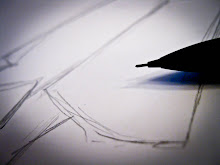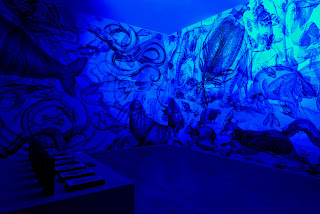-Sandra Steingraber
---
Our world is one of convenience. Perhaps the epitome of convenience is the concept of individually-wrapped packages of.. well, just about anything. Whether it's eating a packet of Top Ramen (and within it, a packet of seasoning) or taking a sip from a bottle of Crystal Geyser spring water, all of us are guilty of supporting individually-wrapped items in blatant disregard of the consequences.
Everyone knows that with every bottle of water tossed in the recycling bin, four more are tossed in the trash. And that it takes about 17 million barrels of oil to support annual consumer demand for water bottles. And almost 3 million tons of plastic.

And even if you didn't, you know now. But will that change anything? Most likely not.
While design attempts to solve problems and make them better -- more effective, more efficient, more intuitive -- there can often be nasty side effectives that are downright dangerous. The worst part is, many of these consequences can't be foreseen until they happen. By then, it's too late because the millions of people whom these ideas affect are already used to the concept and can't turn back.
It's true that many of these individual items are there for other practical benefits, such as individual butter or jam packets to prevent the spread of germs between restaurant customers. However, others are just plain unnecessary. For example, fruits that are sold wrapped up into plastic containers or trays could do just fine in a grocery bag with a little extra effort to not place them at the bottom. Other simple "backwards" changes that would save around 1.5 million tons of packaging waste every year include using personal coffee mugs and bringing cloth shopping bags for trips to buy only a few items from the grocery store.
For some reason, those bag boys/girls feel the need to use a new bag every 2-3 items. Doesn't anyone care about the environment anymore?
Our world is one of convenience. Perhaps the epitome of convenience is the concept of individually-wrapped packages of.. well, just about anything. Whether it's eating a packet of Top Ramen (and within it, a packet of seasoning) or taking a sip from a bottle of Crystal Geyser spring water, all of us are guilty of supporting individually-wrapped items in blatant disregard of the consequences.
Everyone knows that with every bottle of water tossed in the recycling bin, four more are tossed in the trash. And that it takes about 17 million barrels of oil to support annual consumer demand for water bottles. And almost 3 million tons of plastic.

And even if you didn't, you know now. But will that change anything? Most likely not.
While design attempts to solve problems and make them better -- more effective, more efficient, more intuitive -- there can often be nasty side effectives that are downright dangerous. The worst part is, many of these consequences can't be foreseen until they happen. By then, it's too late because the millions of people whom these ideas affect are already used to the concept and can't turn back.
It's true that many of these individual items are there for other practical benefits, such as individual butter or jam packets to prevent the spread of germs between restaurant customers. However, others are just plain unnecessary. For example, fruits that are sold wrapped up into plastic containers or trays could do just fine in a grocery bag with a little extra effort to not place them at the bottom. Other simple "backwards" changes that would save around 1.5 million tons of packaging waste every year include using personal coffee mugs and bringing cloth shopping bags for trips to buy only a few items from the grocery store.
For some reason, those bag boys/girls feel the need to use a new bag every 2-3 items. Doesn't anyone care about the environment anymore?
---
Sources: http://www.thepunch.com.au/articles/the-nine-biggest-sins-of-packaged-food/, http://www.suite101.com/content/bottled-water-and-the-environment-a120739
Sources: http://www.thepunch.com.au/articles/the-nine-biggest-sins-of-packaged-food/, http://www.suite101.com/content/bottled-water-and-the-environment-a120739





















